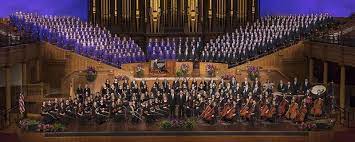The Choral Singer: A Voice in Harmony
In the world of music, the choral singer holds a unique and vital role. With their voice as their instrument, they become part of a larger ensemble, blending their sound with others to create harmonies that resonate deep within the soul. The choral singer is not just a performer but also a storyteller, conveying emotions and narratives through their vocal expressions.
One of the most captivating aspects of being a choral singer is the sense of unity and community that comes with it. Joining a choir means becoming part of a team, working together towards a common goal: to create beautiful music. The bonds formed within a choir are unlike any other, as singers learn to listen attentively to one another, breathe in unison, and blend their voices seamlessly.
Choral singing is an art form that transcends boundaries. It brings people from diverse backgrounds together, united by their love for music. Whether it’s singing in a church choir, an academic ensemble, or a community group, choral singers have the opportunity to connect with others through shared musical experiences.
The benefits of being a choral singer extend beyond the joy of making music. Singing in harmony has been proven to have numerous positive effects on mental and physical well-being. It can reduce stress levels, improve mood and self-esteem, and even strengthen the immune system. Additionally, choral singing fosters discipline and perseverance as singers work diligently to master complex musical compositions.
Being a choral singer requires more than just vocal talent; it demands dedication and commitment. Rehearsals are filled with hours of practice, fine-tuning every note and perfecting every phrase. Choral singers must be willing to invest time and effort into honing their skills while maintaining humility and openness to feedback from their conductor and fellow singers.
Performing as a choral singer is an exhilarating experience like no other. Stepping onto the stage, feeling the anticipation in the air, and then, as the music begins, becoming part of a symphony of voices that fills the concert hall. The power and beauty of choral singing can leave both performers and audiences spellbound.
Choral singers have the privilege of breathing life into centuries-old compositions, as well as exploring contemporary works that push the boundaries of musical expression. They have the opportunity to collaborate with renowned conductors, instrumentalists, and soloists, expanding their artistic horizons and enriching their musical journey.
The choral singer is not just a performer; they are an ambassador for the power of music. Through their dedication and talent, they inspire others to appreciate and engage with this timeless art form. Their voice becomes a conduit for emotion and connection, touching hearts and souls in ways that words alone cannot.
So next time you find yourself captivated by a choir’s performance or moved by a choral composition, take a moment to appreciate the choral singer – an artist who brings melodies to life, weaves harmonies together, and creates moments of pure musical magic.
Frequently Asked Questions About Choral Singing: Explained
- What is choral singing?
- What are the 4 voice types in choral singing?
- What is a choir singer called?
- How do you become a choral singer?
What is choral singing?
Choral singing, also known as choir singing, refers to the practice of singing in a group or ensemble. It involves a group of individuals, known as choral singers or choir members, coming together to collectively perform vocal music. Choral singing can encompass a wide range of musical genres and styles, including classical, sacred, folk, jazz, pop, and more.
In choral singing, each singer contributes their voice to create harmonies and melodies that blend together in unison or in various parts. The singers work collaboratively under the guidance of a conductor or choir director who leads them through rehearsals and performances.
Choral singing often involves performing with accompaniment from instruments such as pianos or orchestras. However, it can also be performed a cappella, where the voices create all the musical elements without instrumental support.
Choirs can vary in size and composition. They may range from small chamber groups to large symphonic choirs with dozens or even hundreds of members. Some choirs are professional ensembles dedicated to performing at the highest level of artistic excellence, while others are community-based groups that bring together singers of various skill levels and backgrounds.
Choral singing offers numerous benefits beyond the joy of making music. It promotes teamwork and cooperation among singers who must listen attentively to one another and blend their voices harmoniously. It also provides opportunities for personal growth by developing vocal technique, musicianship skills, and stage presence.
Choirs often perform in concerts held at venues such as concert halls, churches, schools, or community centers. These performances allow choral singers to share their artistry with audiences and evoke emotional responses through the power of collective vocal expression.
Whether it’s the ethereal beauty of a classical choral piece or the energetic rhythms of a gospel choir performance, choral singing has the ability to inspire both performers and listeners alike. It brings people together through shared musical experiences and creates a sense of unity and connection that transcends cultural, linguistic, and social boundaries.
Choral singing is a cherished tradition that has been passed down through generations, and it continues to thrive as a vibrant form of musical expression. It celebrates the human voice’s capacity for storytelling, emotional communication, and the creation of breathtaking harmonies.
What are the 4 voice types in choral singing?
In choral singing, the four main voice types are soprano, alto, tenor, and bass. Each voice type has its own unique range and characteristics that contribute to the overall harmony and balance of the choir.
- Soprano: The soprano voice is typically the highest voice type in a choir. Sopranos usually have a bright and agile tone, capable of reaching high notes with clarity and precision. They often carry the melody or sing harmonies above it.
- Alto: Altos have a slightly lower range than sopranos and provide a rich, warm quality to choral music. They often sing harmonies below the melody, adding depth and richness to the overall sound. Altos can have either a light or dark timbre, depending on their individual vocal qualities.
- Tenor: Tenors possess a higher male vocal range and are known for their ability to hit high notes with power and clarity. Their voices often add brilliance and energy to choral pieces. Tenors can have either a light or robust timbre, depending on their vocal training and technique.
- Bass: Basses have the lowest vocal range among male singers in a choir. They provide depth and resonance to choral music with their rich, full-bodied tones. Basses often sing harmonies below the melody, providing stability and grounding to the overall sound.
These four voice types work together in harmony, creating a balanced blend of sound that forms the foundation of choral singing. Each voice type brings its own unique color and character to the ensemble, resulting in a cohesive musical experience that captivates audiences worldwide.
What is a choir singer called?
A choir singer is commonly referred to as a chorister or choral singer. They are individuals who sing as part of a choir or choral ensemble.
How do you become a choral singer?
Becoming a choral singer is an exciting and fulfilling journey that requires dedication, passion, and a love for music. Here are some steps to help you embark on this musical path:
- Develop your vocal skills: Start by honing your singing abilities. Take voice lessons from a qualified vocal coach who can guide you in proper technique, breath control, pitch accuracy, and vocal range expansion. Regular practice and vocal exercises will help strengthen your voice and improve your overall singing ability.
- Learn to read sheet music: Familiarize yourself with musical notation and learn how to read sheet music. Understanding the basics of music theory will greatly enhance your ability to follow scores, interpret musical phrases, and blend harmoniously with other singers.
- Join a choir or ensemble: Seek out local choirs or ensembles in your community or educational institution. Audition for these groups to gain valuable experience and exposure to choral singing. Consider joining different types of choirs (e.g., church choir, community choir, school choir) to explore various genres and styles of choral music.
- Attend workshops and masterclasses: Participate in workshops or masterclasses led by experienced choral conductors or renowned vocal coaches. These opportunities provide valuable insights into technique, interpretation, stage presence, and ensemble singing.
- Embrace sight-reading skills: Practice sight-reading exercises regularly to become proficient at reading new music quickly during rehearsals or auditions. This skill is essential for choral singers as they often encounter unfamiliar pieces that need to be learned efficiently.
- Be a team player: Choral singing requires collaboration and teamwork. Develop good listening skills by paying attention to other singers’ voices around you while maintaining your own part within the ensemble. Adaptability and the ability to blend with others are crucial for creating harmonious performances.
- Attend rehearsals consistently: Commitment is key when it comes to choral singing. Attend rehearsals regularly and be prepared to dedicate time outside of rehearsals for individual practice. This will ensure that you are well-prepared and can contribute effectively to the ensemble.
- Seek performance opportunities: Look for opportunities to perform as a choral singer, whether it be in concerts, festivals, or competitions. These experiences will help you gain confidence, stage presence, and exposure to different audiences.
- Embrace continuous learning: Never stop learning and growing as a choral singer. Take advantage of workshops, seminars, and vocal coaching sessions to refine your skills and expand your musical repertoire.
Remember, becoming a choral singer is a journey that requires patience and perseverance. Stay passionate about music, embrace the joy of singing with others, and let your voice become part of the beautiful tapestry of choral harmony.




